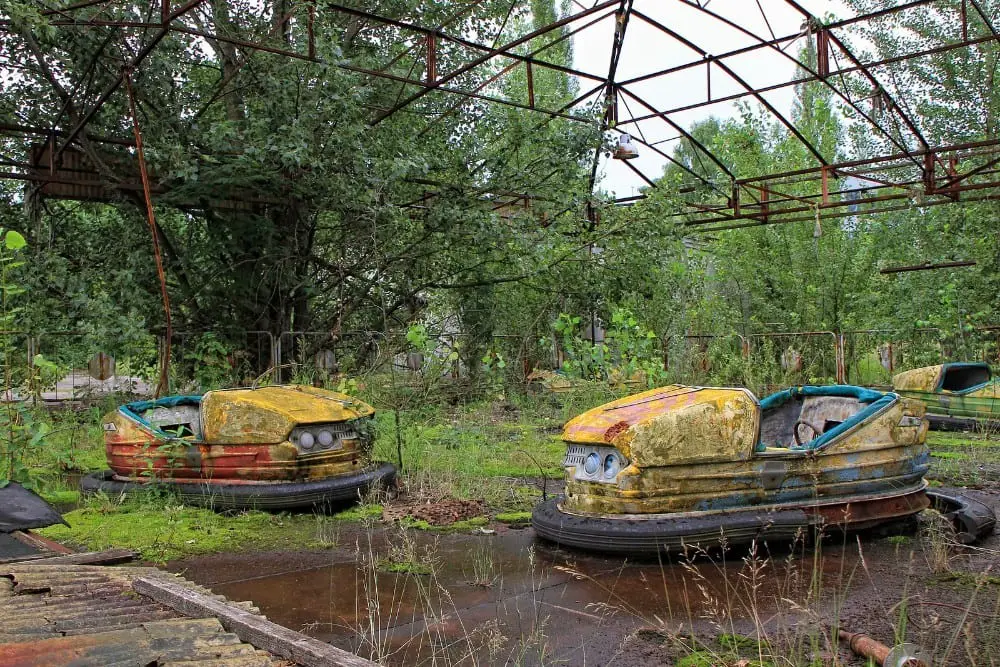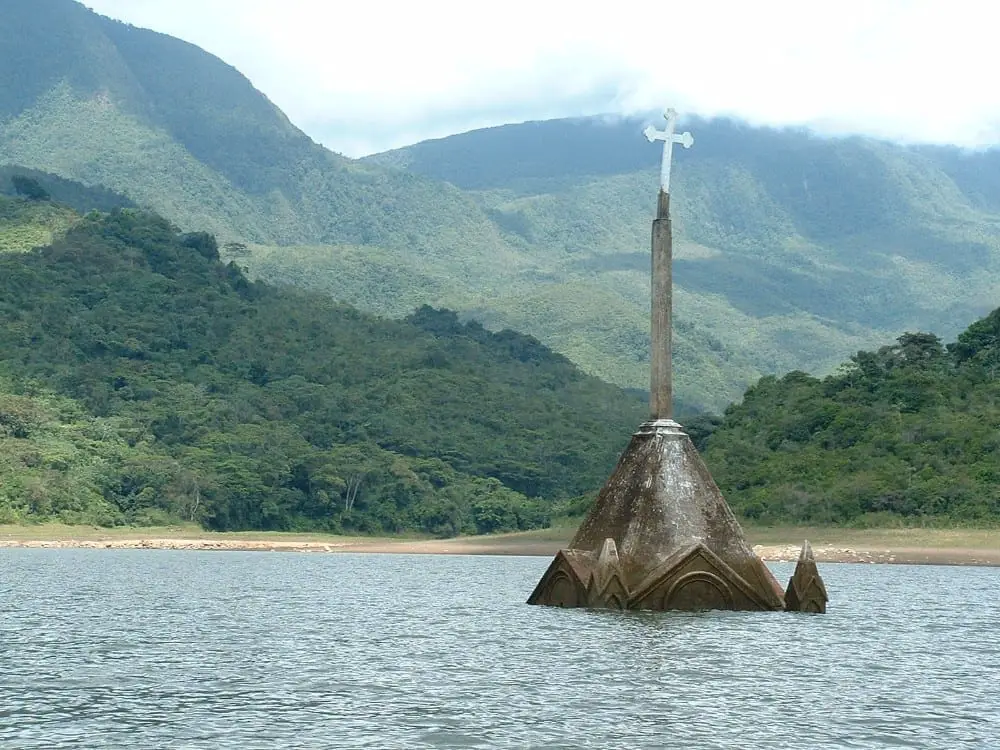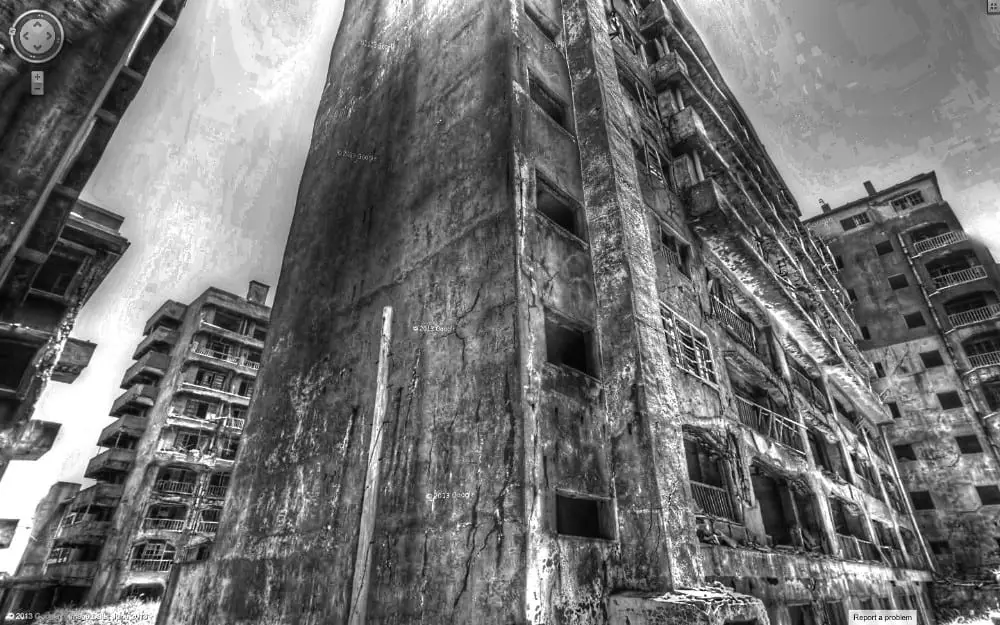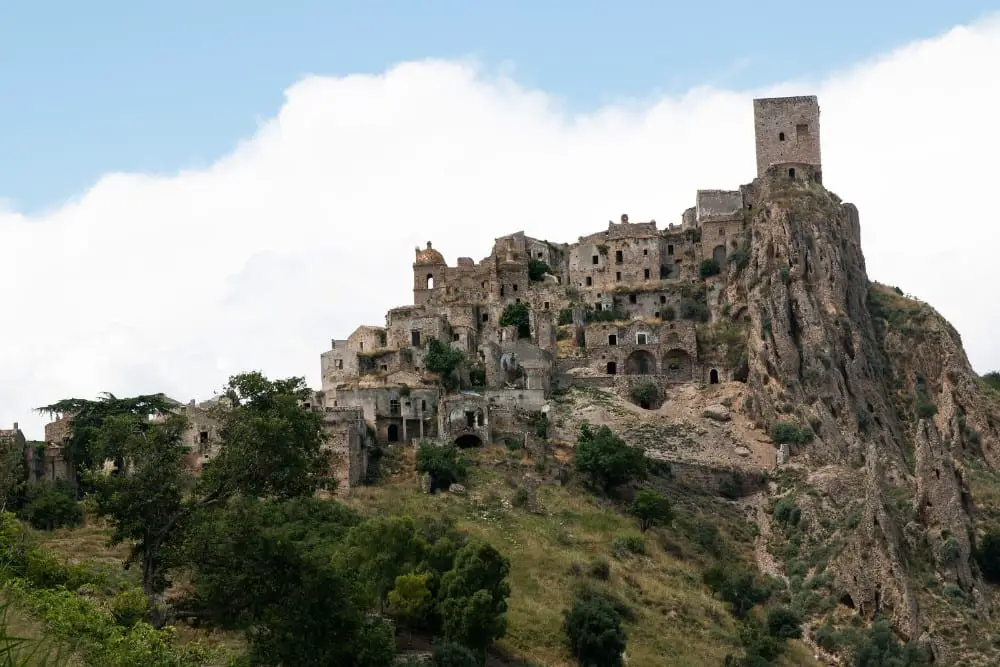For various reasons, most of which are non too pleasant, many villages, towns and cities around the world have been abandoned and today linger on as deserted ghost towns, acting almost as time capsules that offer a glimpse into the past. Visits to some of these places aren’t even possible for either political or safety reasons but if you do manage to get into any of them, it is about as close as you will ever come to travelling back in time. It is literally as if the clocks have stopped and over time nature has recovered what was once a thriving human settlement.
When The Specials released Ghost Town in 1981 they were referring to depressing British towns in a state of urban decay. However the likes of Coventry, where the band originate from, are positively buzzing compared to this lot.
Table of Contents
10 Famous Ghost Towns around the World
1. Pripyat, Ukraine

Constructed in 1970 primarily to house workers at the Chernobyl nuclear plant, Pripyat’s unremarkable existence was to be incredibly short-lived. The population had risen to around 50,000 by 1986 when disaster struck the Soviet town. On the 26th April fire and explosions at the nuclear plant led to a radioactive disaster on a scale never seen before.
31 people died in the accident itself but many times that have succumbed since as a result of the after effects of the disaster. Although part of the Soviet Union at the time, Pripyat is situated in northern Ukraine, just a few miles south of Belarus, which has sadly born the brunt of the after effects of the disaster. The exact number of cancers and other resulting deformities are still being accounted for.
TODAY: Nobody lives in Pripyat anymore. Indeed it has now been a ghost town for a longer period of time than the 16 years it was inhabited. A few people have returned to photograph the town and conduct experiments to investigate the current levels of radiation and there are now even companies offering tour guides of the deserted town. Prior to the coronavirus global pandemic, visitor numbers had started to soar following the hit 2019 HBO TV series Chernobyl – one of the highest rated of all time. You can visit the post-nuclear disaster town with an official tour operator like chernobyltour.co.uk.
Eerie images of the rustic ferris wheel and swimming pool (pictured above) have surfaced over the past few years but Pripyat looks set to remain in its current state well into the distant future. This is probably the most well known of the ten ghost towns around the world featured on this page.
2. Plymouth, Montserrat
The Caribbean island of Montserrat was changed forever once Soufrière Hills volcano started erupting in 1995. The volcano which had previously been dormant for more than a century has remained active ever since although eruptions have been less frequent in recent years. During the original eruption, the capital Plymouth was hit by deadly pyroclastic flows and was eventually fully evacuated in 1997. Roughly two thirds of the island’s population has since been forced into emigration although the northern part of the island remains safe enough to live.
TODAY: Plymouth, is now covered in volcanic ash and is still considered far too dangerous for anyone to live in. The village of Brades (outside the exclusion zone which covers most of the island) has been made the new capital. There are tours these days which allow visitors into Plymouth although you will need a guide who will have to apply for a special permit to take you into the exclusion zone to visit the capital. There is more info over on Visit Montserrat.
Read more – 5 Budget Caribbean Destinations
3. Craco, Italy
Craco by Martin de Lusenet (original image no longer active on Wunderstock), CC BY 2.0
Possibly the most picturesque on this list, Craco in Southern Italy was abandoned in 1963 due to the threat of landslides. The town was founded by monks and previously had a history dating back around 1000 years and was a site of religious significance with numerous ancient churches. It also hosted many important festivals through the year which attracted lots of pilgrims.
TODAY: People still live in Craco although not in it’s crumbling old town which remains a popular setting for film-makers. The Passion of the Christ, Saving Grace and Quantum of Solace are amongst a number of movies that featured scenes in the town. It is protected by the World Monuments Fund so unlike other ghost towns that have been left to rot, some efforts to maintain it are being made.
4. Varosha, Cyprus

Cyprus is best known as a popular holiday destination for Europeans and the district of Varosha in Famagusta was one of the island’s most popular resorts in the early 1970’s. However all that was to change when Turkish forces invaded in 1974 and claimed the northern part of the island. Clashes on the streets of Famagusta led to residents quickly fleeing the conflict and Varosha was abandoned, eventually falling just on the Turkish side of the dividing line. Turkish forces fenced it off and nothing has changed there in over 40 years.
TODAY: Turkish soldiers still reportedly have orders to shoot on sight anyone who tries to enter the area. Nobody lives there and understandably nobody goes there. This is a classic case of nature reclaiming land once inhabited by people. There are even a number of sea turtles who have decided to nest there. There are sporadic attempts to resolve the situation but so much time has passed it seems unlikely that any of the original residents will ever return to their former streets and homes.
As of 2020, there have been reports that Turkey is planning to open up Varosha again by allowing people to settle there. This though would be a highly controversial step which may lead to increased tensions between Greece and Turkey, particularly on the island of Cyprus.
5. Pyramiden, Norway
Deep within the Arctic circle lies the Norwegian archipelago of Svalbard. This place is extraordinarily cold and between 26th October and 15th February the polar night descends leaving the area in darkness for over 3 months. The town of Pyramiden was founded by Sweden in 1910 as a coal mining community before being sold to the Soviet Union a couple of decades later. It remained active up until 1998 when it was finally shut down for good.
TODAY: Only a couple of thousand people live in Svalbard and some coal mining does still go on but Pyramiden has been abandoned. It is possible to visit the ghost town although you aren’t allowed to enter the buildings without permission. In 2013 a hotel was opened up meaning you can stay overnight. Fascinatingly it is also home to both the world’s northernmost piano!
The future is surprisingly bright for the buildings of Pyramiden with scientists predicting that due to the freezing conditions, the buildings will stand the test of time and are likely to still be in decent condition many centuries from now. You can find out more about the town’s history in the Svalbard Museum.
6. Kolmanskop, Namibia

Kolmanskop has been a ghost town since 1954 yet in the early part of the 20th Century it was a small but thriving diamond mining town. The chance discovery of a diamond in the area in 1908 attracted many German miners to the region. In the desert, they constructed a village in typical German style and lived a life of luxury on the back of their finds.
A theatre, casino and even a bowling alley were built and although the towns heyday was to be short lived, residents here enjoyed their lavish surroundings. After World War I, the diamond market crashed and the town declined until it was finally deserted less than 50 years after its formation.
TODAY: Namibia has turned the site into a relatively popular tourist destination and some buildings have been expertly restored. Other parts of the town have literally sank into the desert and you have to wade through thick layers of sand to enter the buildings. It is another town to have been featured in films and TV shows and it even the made the cover of Tame Impala’s 2020 album The Slow Rush.
7. Namie, Futaba, Tomioka and Okuma, Japan
Following the devastating earthquake, tsunami and subsequent nuclear disaster at Fukushima in 2011, a 20 km exclusion zone (which included several medium sized towns) was drawn up around the power plant. This lead to the evacuation of around 300,000 people, many of whom were already grief-stricken following the death of friends and family members.
TODAY: Thousands of people are still living in temporary housing outside the exclusion zone and the towns of Namie, Futaba, Tomioka and Okuma are largely considered to be ghost towns. The mess and destruction has finally been cleared though in most of the area and some small businesses recently opened up in Namie – a sign that things are changing. The exclusion zone has shrunk in recent years, allowing some residents to return home in Namie and Futaba although their populations are still a tiny percentage of what they were before the disaster.
The threat of radiation is still deemed very high in the immediate area surrounding Fukushima although tourist trips and tours are becoming more popular.
8. Agdam, Azerbaijan

One of the most shocking yet least well-known ghost towns is the city of Agdam in Azerbaijan, which features in our South Caucasus travel itinerary. It was once home to over 100,000 people but fell into a state of ruin during the bloody Nagorno-Karabakh War when it was occupied by Armenian forces. As the city fell in 1993, almost the entire town’s population were forced to flee to the east and although it was eventually returned to Azerbaijani rule, there was so little of it left that very few residents returned and instead settled in other parts of the country.
TODAY: The city today resembles a large derelict building site. In short it’s a very depressing place. The Agdam Mosque is about the only thing still standing although even that is in a fairly dire condition. Even the town’s football team Qarabag FK, one of the most successful in the country moved to thriving Baku. The war has long since finished but it seems extremely unlikely that they or any of the evacuees will ever permanently return to their former home.
9. Potosi, Venezuela

Possibly the most ridiculous story on this top ten list comes from Venezuela. In 1985, then president Carlos Andres Perez flew into Potosi, a small town of over 1000 residents on his helicopter ordering it’s full evacuation. The reason? He wanted to flood it in order to build a hydroelectric dam. And he wasn’t joking. Shortly after the evacuation, the entire town was underwater and only the steeple of the 26 metre church was visible.
TODAY: After 25 years underwater, a sudden drought in 2010 saw the reservoir shrink and the remains of the town re-emerge. Many of the original residents were stunned to get the first glimpse of their old town in a quarter of a century although unsurprisingly very little was left of it besides the wall of the church and a few ruins of houses. The church still remains to this day although not very much else.
You can find out more about this remarkable tale here!
10. Hashima Island, Japan

google street view of Hasima Island via pagedooley, CC BY 2.0
Hashima Island was a coal mining facility which opened in the late 19th Century. The small island near Nagasaki in Southern Japan housed over 5,000 workers in many multi-storey apartment blocks. At its peak there were 12 round-trip boat services a day from the mainland to densely populated Hashima which played an important role in the industrialisation of Japan.
However the familiar tale of the closing down of coal mines across the developed world in the 1970’s and 80’s claimed another victim here. With little other purpose, the island was abandoned in 1974 and was simply left to rot away.
TODAY: Travel to the island was only officially re-established in 2009, some 35 years after anyone had been allowed to set foot there. Most of Hashima is still off limits and it would require an enormous (and unlikely) investment to ensure the safety of the buildings. A small corner of the island is open to visitors who reportedly are flocking to take a peak into what was once a busy and important island. However independent visits are not possible and the tour companies that organise trips will require you to sign a safety contract as you need to strictly follow your guide’s advice at all times. There’s more info on visiting Hashima Island here.
The second Japanese entry on our list, was the inspiration for a long scene in the 2012 James Bond film, Skyfall although filming didn’t take place on the island itself.
This article was last updated in May 2020.



This is scary